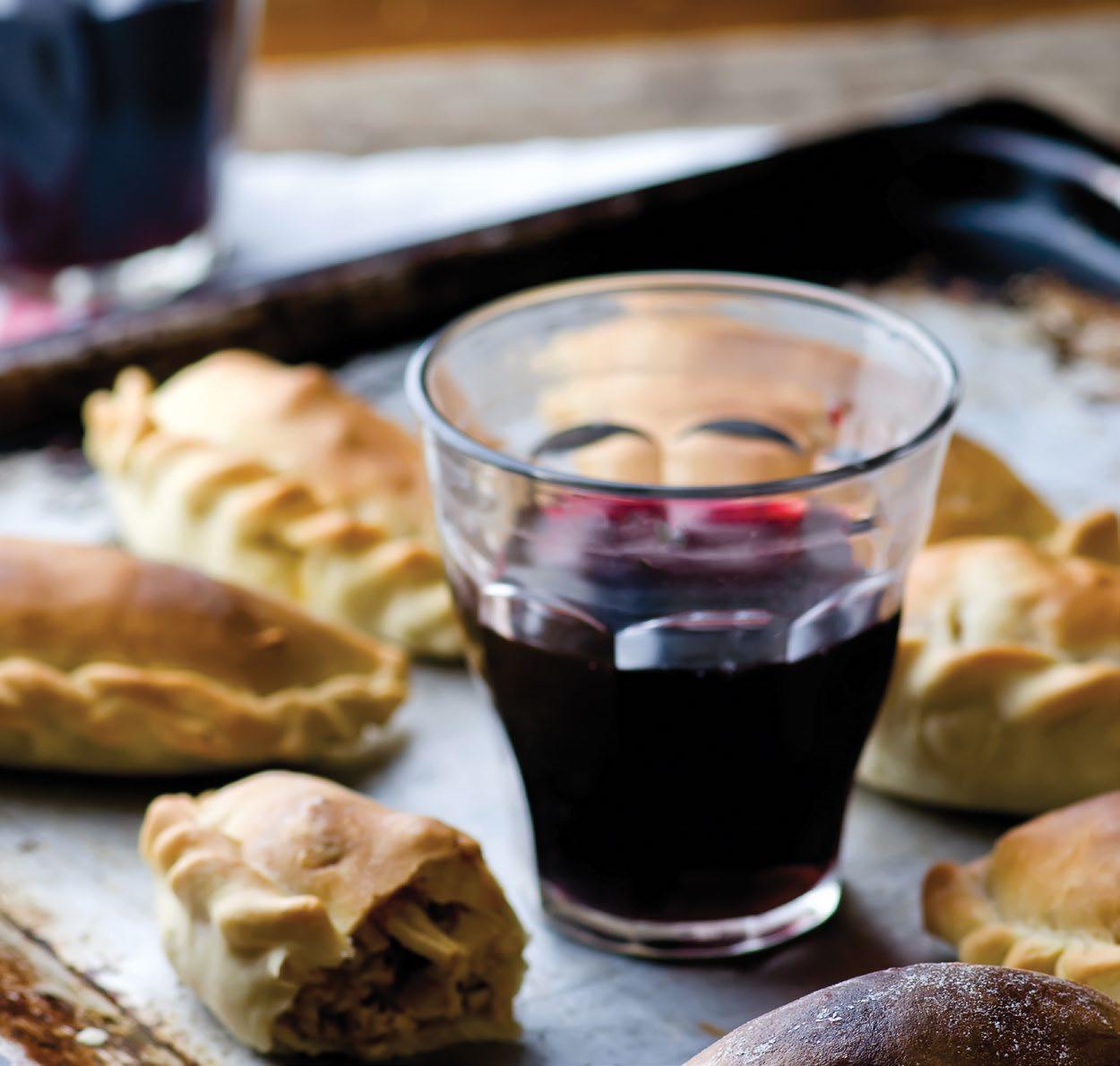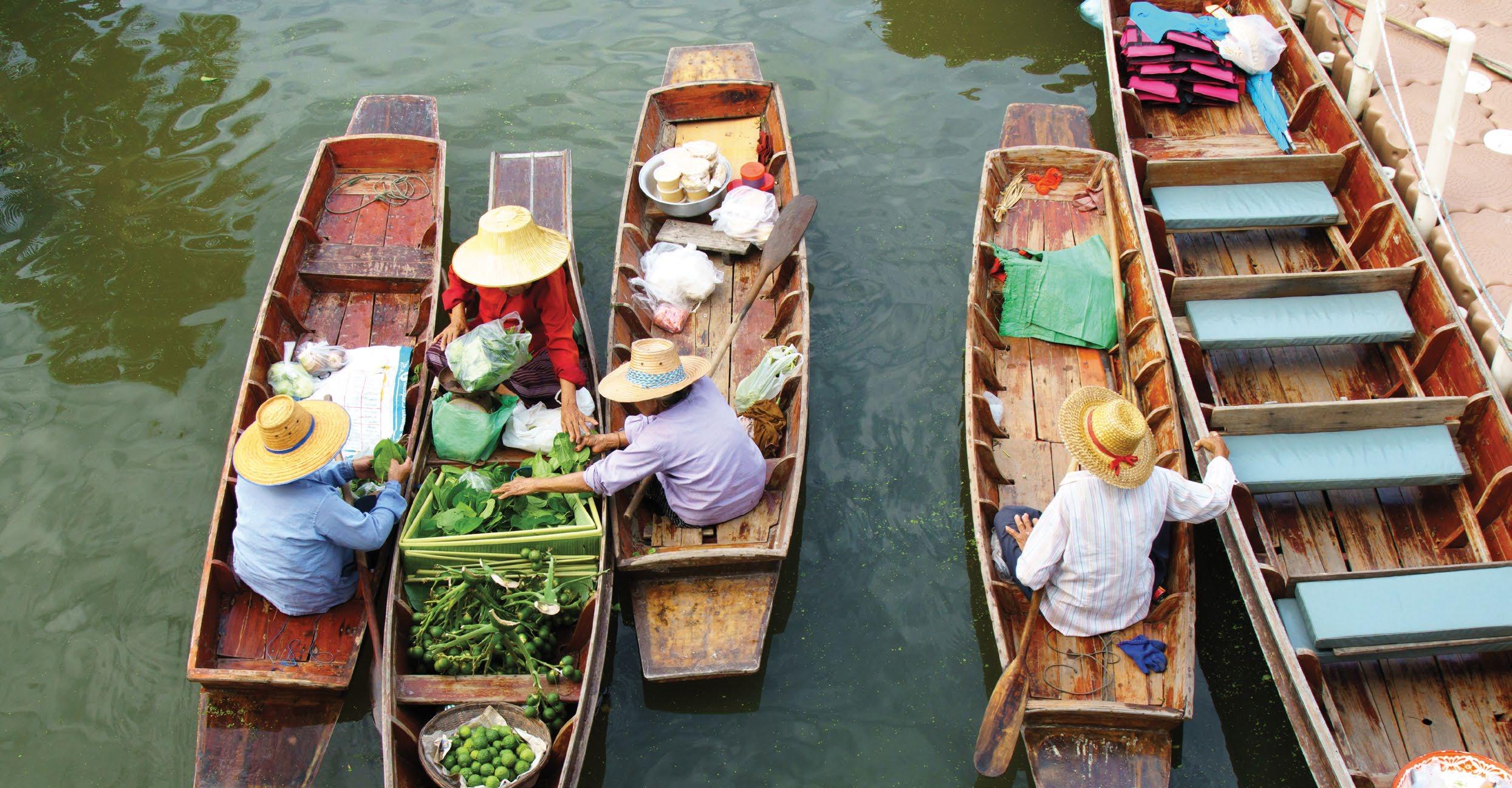
7 minute read
8 of the best

Fresh salad ingredients, Hue Fresh empanadas, Buenos Aires
Advertisement
7Cooking in a family nha vuon in Hue, Vietnam 8 Hands-on cooking in Buenos Aires, Argentina
Hue’s imperial heritage means it plays an outsized role in the country’s culinary culture. Royal patrons and affluent families put an emphasis on expensive spices and precise techniques. Many of these families lived in nha vuon, singlestorey houses with extensive gardens to supply their kitchens.
A guided tour of a local nha vuon begins in the garden, of course, where you’ll see jackfruit, plum trees and peanuts growing alongside pineapples and pumpkin vines. Your host will help you pick the ingredients you need for the afternoon meal before you head to the kitchen. There, you’ll likely start by mixing up a batch of nuoc cham, the traditional condiment made with chillies, lime, fresh garlic, palm sugar and fish sauce. Then, help to make dishes like mango salad, deep-fried spring rolls and bun thit nuong, a cold rice noodle dish topped with grilled pork and fragrant fresh basil and mint. A perfectly grilled steak, with a deep-brown crust and a meltingly tender, rosy-pink interior, accompanied by a glass of dark, fruity malbec… It’s easy to get lost in the obvious charms of Argentinian cuisine. But the country’s food is much more than just asado and wine — in addition to Spanish and Italian influences, you’ll find hints of the dozens of local indigenous cultures, all blended together. If you want to delve deeper, consider making some time for a hands-on cooking class.
The class begins with a guided trip to the local market, where you can greet vendors and help select ingredients for the day’s meal. Then, you’ll return to Azaí, an airy kitchen space tucked into the leafy Buenos Aires residential area known as Chacarita. With a local chef, you’ll learn to make local treats like yerba mate, a caffeine-rich drink, and sweet dessert empanadas, all accompanied by a glass of Argentinian wine.
THAILAND
Highlights in a new light
For me, Thailand at its best is the crunch of a fresh spring roll, Bangkok’s Grand Palace glittering in the sun or an elephant trumpeting in the jungle. You don’t have to follow the crowds to experience the real essence of Thailand. I’ve created this itinerary with a fresh take on the highlights, taking you from hidden corners of Bangkok to remote jungle and secluded beaches.
Ian Thailand specialist
MYANMAR (BURMA)
Bangkok
Amphawa
Kui Buri Koh Samet
TRIP HIGHLIGHTS
• Sample Thai cuisine with a Bangkok resident. • Cruise past fruit and vegetable sellers at a floating market. • Join a local ranger for a chance to see wild elephants in Kui Buri National Park.
• Ride a portion of the Burma-Thailand Railway. • Snorkel the clear waters off Koh Samet.

Days 1-3: Bangkok
Just thinking about Bangkok makes me hungry. So, on arrival, the first thing I suggest you do is take a private food tour with a city resident. You’ll see food stalls, markets and hawkers everywhere, so the experienced tastebuds of a local are a welcome guide. They can take you to quiet streets and hidden cafes that few visitors find, enabling you to come to grips with Thai cuisine in peace. I’m partial to sai ua, a large coil of grilled sausage that hails from the north.
This local insight is also invaluable when exploring some of the better-known sights around the city, including the postcard-popular Grand Palace. A guide can plan your day to avoid any busy times, and everyone I met shared an infectious enthusiasm for Thailand. Bangkok is a city of markets, but they can get busy. Instead, with a private guide, you can head out into the surrounding countryside to float along the waterways of Amphawa. This sleepy riverside town hosts a floating market, where pineapples, bananas and flowers are piled precariously high in narrow boats, their vendor squeezed in at the stern.
Days 4-5: Kui Buri
Thailand is well known for its elephant sanctuaries, but it’s still possible to see these gentle, inquisitive creatures in the wild.
Kui Buri National Park, in central Thailand, has a healthy population of around 250 wild elephants. The forest-covered Tenasserim Hills create a natural arena where you can view the elephants. You’re also likely to see a range of birdlife as well as golden jackal and deer.
There are no private-pool lodges or restaurants here — instead, you’ll stay in a locally owned guesthouse in Ruam Thai village, a farming community along the park boundary.
You’ll explore the park in an open-top 4x4, accompanied by your private guide and national park ranger. There are a number of points where the vehicle stops and, if safe to do so, you can to step out with the ranger. While sightings are common, you’re not here for an up-close encounter. Instead, you’re looking to (with any luck) observe the herd from one of the viewing platforms.
And, what a herd. Down in the long grasses, it



Vendors at Amphawa floating market It was a two-year trip of a lifetime that gave Ian a passion for all things Southeast Asia.
often exceeds 40 elephants, with tiny youngsters tucked under the mothers.
Days 6-8: Kanchanaburi
synonymous with Pierre Boulle’s 1952 novel, might feel the tickle of fish on your toes. The Bridge Over the River Kwai, makes an ideal base for exploring. You can stay on the river The natural history here could keep you itself, in your own floating thatched-roof villa occupied for days, but it’s the modern history of with a private terrace looking out to the forests Kanchanaburi that I’ve found most memorable. While this is a country of photogenic of Erawan National Park beyond. Take a tour with a private guide and you’ll landscapes, I’d say that begin with The Thailand-Burma Railway central Thailand really If you’re itching to Centre, a well-designed museum dedicated to takes the crown. Lush farmland growing tapioca and papaya gives ‘’Down in the long grasses, the herd often exceeds 40 explore, you can kayak, canoe or river raft the waterways, and cycle or preserving the history of the ‘Death Railway’, way to hills blanketed in thick forest, topped with mist in the earlyelephants, with tiny youngsters tucked under the mothers.” trek through the forest. I also suggest a private tour of Erawan Falls, morning light. a series of aquamarine pools that are so ideal The Kwai River cuts through the landscape in a for swimming, it’s hard to believe it isn’t a manseries of tight turquoise curves, with life in the made leisure resort. You’re shaded by jungle region clustered along its banks. Kanchanaburi, greenery and if you stand still long enough, you MAKE THIS TRIP YOUR OWN
If history is your focus, complement your Royal Palace visit with a tour of Ayutthaya, the royal capital for over 400 years and a UNESCO World Heritage Site.


Secluded beach on Koh Samet Wild elephants in Kui Buri
When to go
before taking a ride on the train itself. This is where your guide comes into his or her own — they take real pride in being the custodians of the stories belonging to those who lived and died building the route.
Days 9-12: Koh Samet
Journeying through Thailand, there’s something new to see around each corner. On Koh Samet, however, life becomes refreshingly simple. Most of this tiny island is covered in thick jungle, with forested hills to the south that shelter secluded beaches shared by one or two hotels.
Cradled by the mainland in the Gulf of Thailand, it’s one of the driest islands in the country, boasting year-round sunshine and bathwater-warm coves. The Paradee Resort is on a bay of its own, with a private island feel and low-rise thatched villas scattered across the beachfront. I’ve never really felt the need for shoes here — you step from your bedroom straight onto the beach.
Days are best spent lying languid by the pool or in the sea, where the water’s so clear you can see your feet. Snorkel and the stage is set for shoals of fish glittering among the reefs. While diving, I was once lucky enough to see a whale shark silently gliding through the deep.
JAN FEB MAR APR MAY JUN JUL AUG SEP OCT NOV DEC
3 3 3 3 3 3 3 3 3 3 3 3 3 3 3 3 3
January to March is the best time to visit Thailand for lush, green landscapes adorned with flowers.










